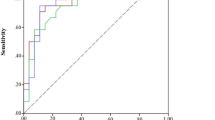Abstract
Improved imaging techniques and the increased need for a personal health record platform suggest that a Telehealth based system has an excellent potential for improving patient care and providing a high capacity for information storage and retrieval. New video-capture technology will allow parents, schoolteachers, and caregivers to capture a child’s behavior for subsequent evaluation by specialists worldwide even during a time of crisis. Experience in a recent hurricane disaster illustrated the advantages of merging these two entities, especially when addressing the needs of displaced families who have a child with autism. It is clear that Telehealth based systems can shorten the time for diagnosis, potentially increase diagnostic accuracy, reduce costs, and contribute to an improved status of personal health records.
Similar content being viewed by others
References
Bertrand, J., Mars, A., Boyle, C., Dove, F., Yeargin-Allsopp, M., & Decoufle, P. (2001). Prevalence of autism in a US population: The Brick Township, New Jersey, Investigation. Pediatrics, 108, 1155–1161.
Centers for Disease Control and Prevention (2000). Prevalence of Autism in Brick Township, New Jersey, 1998: Community report, April.
Crawford, N. (2003). Knocking down access barriers. APA Online, 34,6. Retrieved from the World Wide Web: http://www.apa.org/monitor/jun03/access.html, June.
Lovaas, O. I. (1987). Behavioral treatment and normal educational and intellectual functioning in young autistic children. Journal of Consulting Clinical Psychology, 55, 3–9.
National Research Council (2001). Educating children with autism: committee on educational interventions for children with autism. 172.
Oberleitner, R., Ball, J., Gillette, D., Naseef, R., & Stamm B. (2005). Technologies to lessen the distress of autism. Journal of Aggression, Maltreatment, and Trauma, 12, 221–242, September.
Prater, C. D., & Zylstra, R. G. (2002). Autism: A medical primer. American Family Physician, 66, 1667–1674.
Reischl, U., Oberleitner, R., & Simper P. (2006). Connecting autism families with emergency support. Northwest Public Health, 23, 12–13.
Author information
Authors and Affiliations
Corresponding author
Rights and permissions
About this article
Cite this article
Oberleitner, R., Elison-Bowers, P., Reischl, U. et al. Optimizing the Personal Health Record with Special Video Capture for the Treatment of Autism. J Dev Phys Disabil 19, 513–518 (2007). https://doi.org/10.1007/s10882-007-9067-3
Published:
Issue Date:
DOI: https://doi.org/10.1007/s10882-007-9067-3




